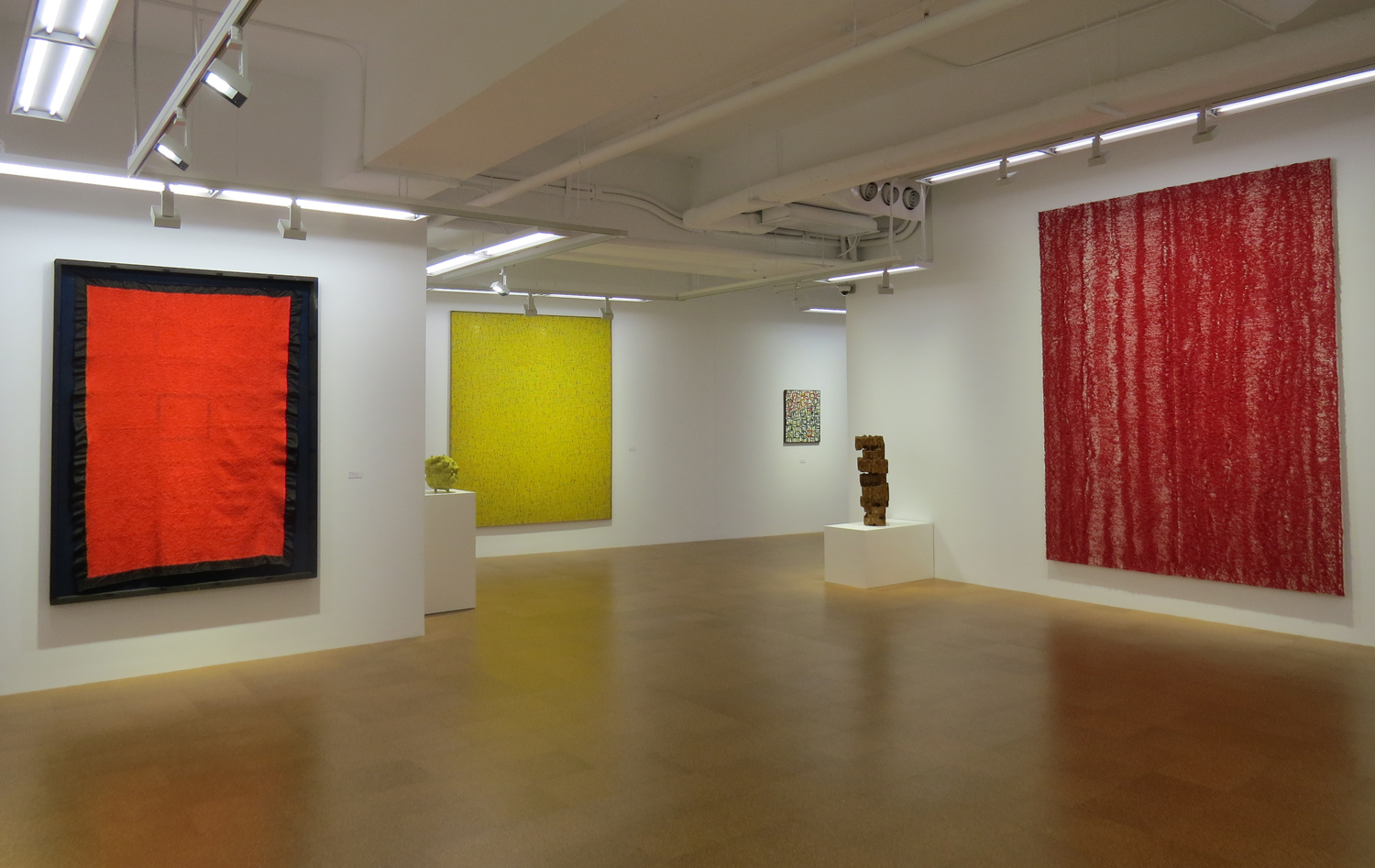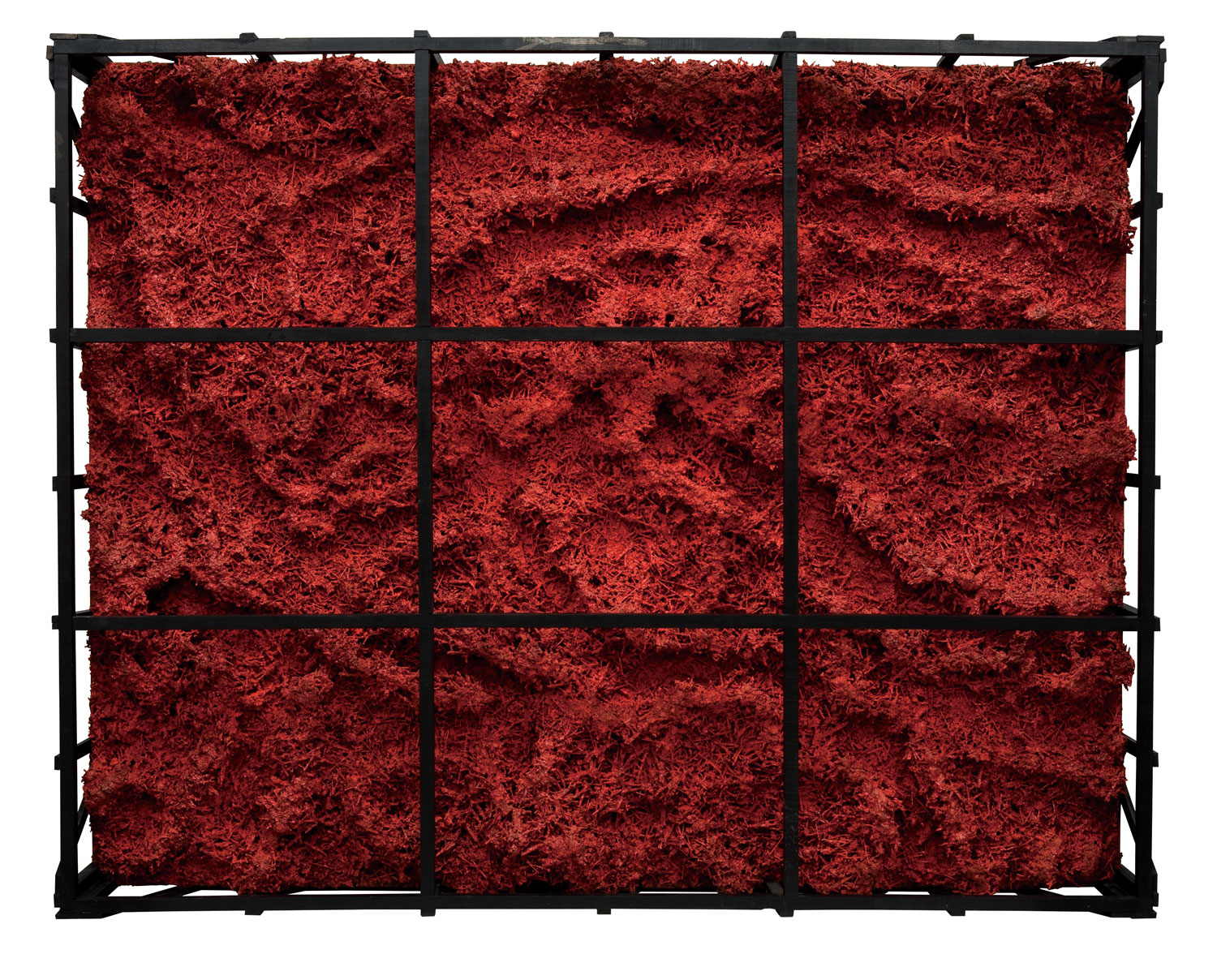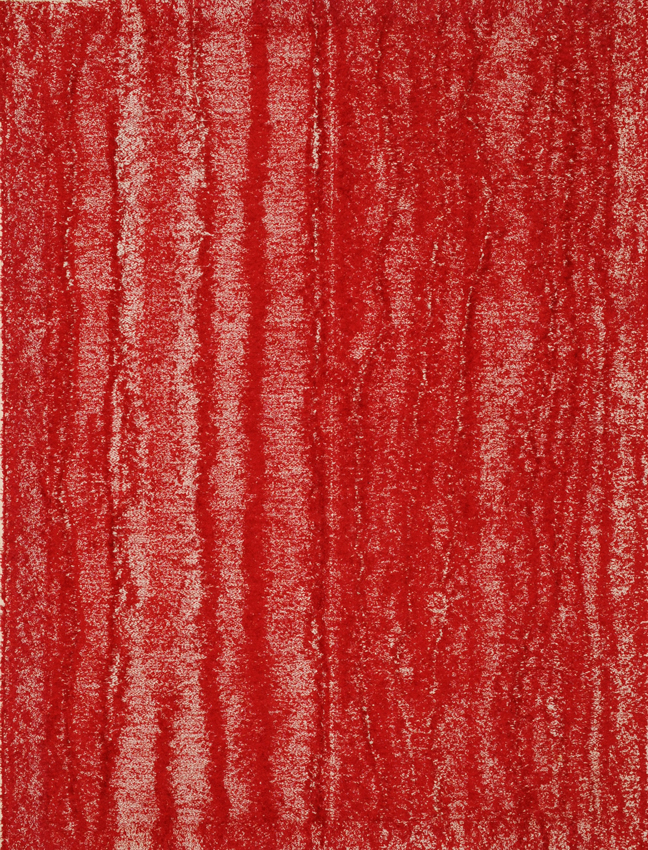Shows
Chiyu Uemae: A Solitary Path


The recent revival of international interest in Japanese postwar modernism has brought to Hong Kong solo exhibitions of lesser-known members of the Gutai Art Association. Japan’s Whitestone Gallery inaugurated its new outpost in Wong Chuk Hang with “Chiyu Uemae: A Solitary Path,” presenting works by the founding member of the avant-garde art group, which sought innovative and original possibilities of image-making and performances from interactions between body and matter. Militantly enforced by the group's leader Jiro Yoshihara (1905–1972), Gutai philosophies have continuously influenced Uemae’s ideas about his own work from the 1950s through to the present.
Yet Uemae, a self-taught artist, also went his own way. “My life’s work has been dedicated to absorbing new artistic styles, and pursuing my own unique approach to painting,” he said of his own practice, adding that this “was entirely possible despite my being a member of the Gutai group.” It was a surprising sentiment from an artist who had relentlessly sought Yoshihara’s approval and stayed with the group until it disbanded in 1972. Doggedly focused on the flat picture plane (though he does occasionally make sculpture) and eschewing performance, Uemae was forced onto the “solitary path” alluded to in the exhibition’s title—one that was not travelled by his action-based contemporaries Kazuo Shiraga or Shozo Shimamoto. Now, almost 60 years after the founding of Gutai, as Shiraga’s foot paintings and Shimamoto’s splattered canvases have become some of the movement’s most well-known icons, 94-year-old Uemae is finally gaining recognition for his time-consuming, physically demanding solutions of fusing labor with material.
“A Solitary Path” features a dazzling spectrum of paintings and sculptures dating back to the 1960s that consistently betrays Uemae's love for accumulation. To amble through the artist’s first Hong Kong solo exhibition is to observe 39 ways to amass objects, repeat shapes and layer paint.


An early untitled oil on canvas from 1966 shows an obsessive daubing of paint all over the work's surface. Against a darker ground, with hints of bright red, green and blue showing through, strokes of marigold glow like molten metal, perhaps inspired by the many years the artist spent working as a crane operator at a steelmaking plant. In a later work from 1994, yellow outlines of rectangular forms—much like postage stamps—are haphazardly replicated against a black expanse, alluding either to the dark blast furnaces in which steel is smelted or, perhaps, to the cross-sections of chutes used to cool newly cast steel. Uemae’s fuzzy rectangle motif recurs in many of his works in varying compositional arrangements and color combinations.
While these two pictures are examples of Uemae's use of the brush to create paintings, in the case of Untitled (1970–90) he instead cuts lines repeatedly into a layer of paint with a palette knife. A composition of yellow on black, the work is bestowed with the textural quality of a low-relief sculpture, achieved through the artist’s exploration of the materiality of the medium and its response to his actions.
Further straddling the genres of painting and sculpture is an imposing, untitled caged wall-piece from the 1960s. An undulating sea of crimson is, in fact, a pile of matchsticks drenched and dried in pigment. To protect its fragile, uneven surface, Uemae built a wooden frame that holds a black grid over the work. Here, a deluge of matchsticks—previously discarded quotidian items that were "rescued" by the artist to realize his artwork—has been heaped into a rich, dynamic assemblage, which testifies to the Gutai tenet of breaking down barriers between everyday life and art. Uemae has made only three such matchstick works; the remaining two, both of which are smaller in size, are in the permanent collections of the Enokojima Art, Culture and Creative Centre and the Ashiya City Museum of Art and History in Japan.


Dominating the main room of the gallery space are Uemae’s stitched works, the most labor-intensive pieces in his practice. Uemae began the series in the mid-1970s, but it was during his early apprenticeship as a fabric dyer that the industrious artist—who grew up in extreme poverty—acquired sewing skills and first handled bolts of kiji (raw fabric) and orimono (textile). These experiences—in which he discovered forms, created motifs and discovered shapes and visions—sowed the seeds of inspiration for his stitched works. The pieces in this particular series are usually quite large, measuring up to three meters in height, and most took him years to complete. Uemae carefully considers how each work is to be presented; some are mounted on stretcher bars, while others are suspended within a deeply recessed floating frame. A strong example is the expansive Untitled (1987), which has innumberable yellow stitches of fluctuating density set on a black background. From afar, the pattern resembles the pulsing waves, complete with spikes and dips, of an electrocardiogram turned sideways. Another beautiful work is the slightly smaller Untitled (1979–83), showing rows upon rows of red curls on a cream background, every single one handsewn onto the cloth by the artist. Stitch after stitch, Uemae recorded the tremendous amount of time he spent with the everyday materials of thread, needle and cloth.
A man of modest means, Uemae kept all his works and never thought to sell any commercially. With this exhibition, courtesy of Whitestone Gallery, viewers are treated to a generous display of works by an artist of remarkable diligence and perseverance. If “Chiyu Uemae: A Solitary Path” is any indication of the programming caliber we can expect from Whitestone's Hong Kong outpost, its upcoming solo exhibition of Yayoi Kusama—slated to open in July—will be something to look out for.

Denise Chu is managing editor at ArtAsiaPacific.
“Chiyu Uemae: A Solitary Path” is on view at Whitestone Gallery, Hong Kong, until June 12, 2015.







